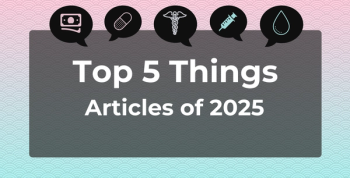
Lung Transplant Referrals Lag for High-Risk Patients With PAH
Key Takeaways
- Only 12% of PAH patients were referred for lung transplantation, with significant disparities in referral rates based on demographics and clinical parameters.
- Patients referred for transplant were generally younger, more educated, had higher incomes, and better renal function, but worse physical health-related quality of life.
Despite recommendations on early referral for lung transplantation in cases of pulmonary arterial hypertension (PAH), there is a lack of in-depth understanding of this current landscape; in this analysis, clinical parameter data were used to compare outcomes between patients who were and were not referred for lung transplantation.
Despite knowledge that patients who have
Using data from the Pulmonary Hypertension Association Registry, experts examined outcomes between those who were and were not referred for
The analysis included 1671 patients, accounting for 4607 person-years of follow-up. Of these, 199 (12%) patients were referred for transplant, and 1472 (88%) patients were not referred.
Overall, follow-up was similar between the 2 groups (P = .82), with a median (IQR) of 837 (427-1476) days seen among those not referred compared with 810 (473-1475) days seen among those who were referred. Among the 12% referred for transplant, 50% had not undergone the procedure by the time of the study, 30% had undergone transplant, and the remaining died prior to the procedure.
The ever-referred and never-referred patients had these demographics in common: private insurance coverage (56% and 53%, respectively), ever married (79% and 80%), employed (39% each), and non-Hispanic ethnicity (85% each).
Patients referred for transplant were more likely to meet the following criteria:
- Graduated college: 47% vs 36% (P = .002)
- Have a lower mean body mass index: 27.2 (5.9) vs 29.2 (6.3) kg/m2 (P < .001)
- Have a higher income: 54% vs 45% had annual household incomes between $50,000 and $150,000 (P = .008)
- Be younger: 47.2 vs 51.3 years (P < .001)
- Fewer ever-smokers (35% vs 45%; P = .007) or methamphetamine users (10% vs 20%; P = .002)
- Have a shorter 6-minute walk test distance at baseline: 323 (121) vs 363 (119) m (P < .001)
- Have a higher NT-proBNP at baseline: 774.5 (310-2308) vs 384.5 (136-1350) (P < .001)
- Have better renal function at baseline, as measured using the race-neutral equation for the Mean Chronic Kidney Disease Epidemiology Collaboration: 89.1 (22.9) vs 83.5 (24.7) mL/min/1.73 m² (P < .001)
These patients also demonstrated higher disease functional class and higher European Society of Cardiology/European Respiratory Society baseline risk scores (P < .001); higher heart rate, transpulmonary gradient, and pulmonary vascular resistance (P < .008); and lower systolic blood pressure, cardiac output, cardiac index, and stroke volume index (P < .02).
Lower rates of referral were seen in patients who self-identified as Native American vs the highest rates seen in patients who self-identified as Black or Asian (P = .010); in the Midwest region of the US compared with the Northeast, South, and West regions (P = .024); and in patients with HIV-associated or toxin-associated PAH vs those who had pulmonary veno-occlusive disease– and connective tissue disease–related PAH (P = .004). Just 21% of patients with WHO FC IV disease and 18% considered to have high-risk disease were referred for transplant
No differences were seen in mental health–related quality of life (HRQOL) between the patient groups, but patients referred for transplant did demonstrate worse generic-physical HRQOL (P < .001). Further, adjusting for age older than 60 and excluding patients with a body mass index above 35 kg/m2 or below 16 kg/m2 did not change the authors findings.
Overall, the authors saw a 42% greater risk of death (HR, 1.42; 95% CI, 1.02-1.99) in patients referred vs not referred for transplant, which remained significant even after adjusting for age, gender, race, and PAH-specific therapy.
“It should also be noted that, there are many factors which are challenging to evaluate in a registry, which also warrant referral,” the authors wrote. “As such, it is concerning that rates of referral were low for our cohort since we did not capture all the indications for referral.”
There are many potential reasons behind the low transplant referral rates they saw, they added. These could include the many effective PAH therapies available to patients, low rates of post–lung transplant survival, misconceptions on transplant benefits, and clinician views on early transplant or unlikely candidacy for the procedure. Also, patients may have contraindications to or not want to undergo a transplant.
“Future studies could assess provider perceptions on referral for transplantation to better understand why [and] should assess patient perceptions on early referral for transplantation,” the authors concluded, “to understand if there are any downsides to early referral from the patient.”
References
- Kolaitis NA, Singer JP, Bartolome S, et al. The landscape of referrals for lung transplantation in pulmonary arterial hypertension: a report from the Pulmonary Hypertension Association Registry. J Heart Lung Transplant. 2025;S1053-2498(25)02055-8. doi:10.1016/j.healun.2025.06.019
- Humbert M, Kovacs G, Hoeper MM, et al. 2022 ESC/ERS Guidelines for the diagnosis and treatment of pulmonary hypertension. Eur Respir J. 2023;61(1):2200879. doi:10.1183/13993003.00879-2022
- Savale L, Benazzo A, Corris P, et al. Transplantation, bridging, and support technologies in pulmonary hypertension. Eur Respir J. 2024;64(4):2401193. doi:10.1183/13993003.01193-2024
- Kolaitis NA, Barnes H, Levine DJ, et al. Approach to lung transplantation in pulmonary arterial hypertension: a Delphi Consensus on behalf of the Transplant Task Force of the Pulmonary Vascular Research Institute. Pulm Circ. 2025;15(2):e70088. doi:10.1002/pul2.70088
Newsletter
Stay ahead of policy, cost, and value—subscribe to AJMC for expert insights at the intersection of clinical care and health economics.







































